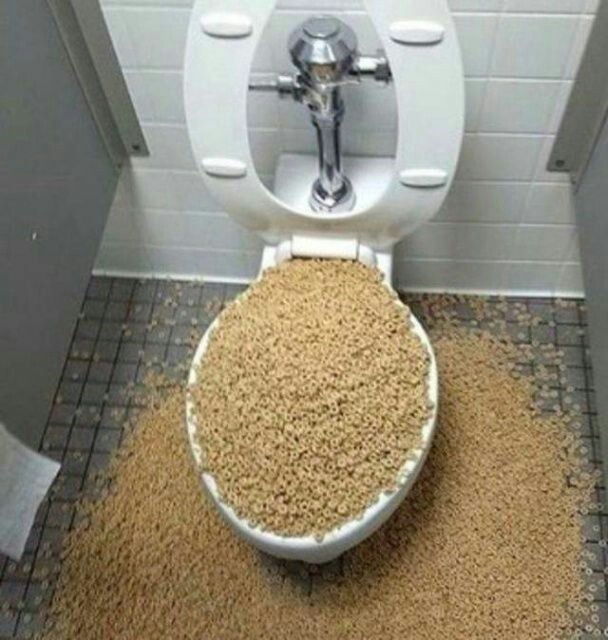Is it Okay to Dispose of Food in the Toilet?
Is it Okay to Dispose of Food in the Toilet?
Blog Article
Almost everyone seems to have their private idea involving What Can Happen If You Flush Food Down the Toilet?.

Intro
Many individuals are typically confronted with the dilemma of what to do with food waste, particularly when it pertains to leftovers or scraps. One common inquiry that develops is whether it's okay to purge food down the toilet. In this post, we'll look into the reasons why people might think about purging food, the repercussions of doing so, and different techniques for proper disposal.
Reasons that people could think about flushing food
Absence of awareness
Some individuals might not be aware of the potential damage brought on by flushing food down the bathroom. They might wrongly believe that it's a safe technique.
Convenience
Purging food down the commode might seem like a fast and simple remedy to disposing of undesirable scraps, particularly when there's no nearby trash bin available.
Laziness
Sometimes, individuals may simply select to flush food out of large laziness, without taking into consideration the effects of their actions.
Repercussions of flushing food down the commode
Ecological effect
Food waste that winds up in waterways can contribute to contamination and damage water ecosystems. Additionally, the water made use of to purge food can stress water sources.
Plumbing problems
Purging food can result in clogged pipelines and drains pipes, triggering costly pipes repairs and inconveniences.
Kinds of food that must not be flushed
Coarse foods
Foods with coarse textures such as celery or corn husks can get tangled in pipelines and cause blockages.
Starchy foods
Starchy foods like pasta and rice can soak up water and swell, causing obstructions in pipelines.
Oils and fats
Greasy foods like bacon or food preparation oils need to never be purged down the commode as they can solidify and trigger blockages.
Appropriate disposal techniques for food waste
Using a garbage disposal
For homes equipped with garbage disposals, food scraps can be ground up and purged with the pipes system. Nonetheless, not all foods appropriate for disposal in this way.
Recycling
Certain food product packaging materials can be reused, decreasing waste and minimizing environmental effect.
Composting
Composting is a green method to dispose of food waste. Organic materials can be composted and made use of to enhance dirt for gardening.
The significance of correct waste administration
Minimizing environmental harm
Proper waste administration techniques, such as composting and recycling, help lessen contamination and preserve natural deposits for future generations.
Safeguarding pipes systems
By staying clear of the practice of flushing food down the bathroom, house owners can protect against expensive pipes repair work and maintain the integrity of their pipes systems.
Verdict
In conclusion, while it may be alluring to purge food down the bathroom for ease, it's important to comprehend the possible consequences of this action. By taking on proper waste management techniques and getting rid of food waste sensibly, people can add to healthier pipes systems and a cleaner atmosphere for all.
FLUSH FOOD DOWN THE TOILET?
FLUSHING FOOD CAN CAUSE BLOCKED DRAINS IN YOUR HOME
All of the plumbing fixtures in your home are connected to the same sewer pipe outside of your home. This outdoor sewer pipe is responsible for transporting all the wastewater from your home to the Council sewer mains. Even small pieces of food that go down the kitchen sink can cause problems for your sewer. It should therefore be obvious that flushing larger bits of food, such as meat, risks a clog in either the toilet itself or the sewer pipes. Flushing greasy food is even more problematic because oil coagulates when it cools, coating the interior lining of your pipes.
THE TOILET IS NOT A BIN
Food isn’t the only thing that people shouldn’t be flushing down the toilet. People use the toilet to dispose of all kinds of things such as tampons, makeup wipes, dental floss, kitty litter and even underwear. Water goes to great lengths to educate residents about the high costs and stress placed on wastewater treatment systems simply from people flushing the wrong stuff down the toilet. It costs taxpayers millions of dollars each year, and homeowners thousands in blocked drain repairs.
FLUSHING FOOD IS A WASTE OF WATER
Flushing food is a waste of our most precious resource - water. In June this year Level 1 water restrictions were introduced to protect water supply from drought conditions. Much of New South Wales continues to be affected by prolonged drought with recent figures revealing up to 97 per cent of the state remains in drought. Depending on whether you have a single or dual flush toilet, every single flush uses between five and 11 litres of water. In the current climate this is a huge amount of water to be wasting on flushing food that should be placed in the bin (or better yet, the compost).
https://www.jabplumbingsolutions.com.au/blog/can-you-flush-food-down-the-toilet

Hopefully you liked our section about . Thanks for taking a few minutes to browse our article. In case you liked our page plz be sure to share it. Thank you so much for going through it.
Book Instantly Report this page